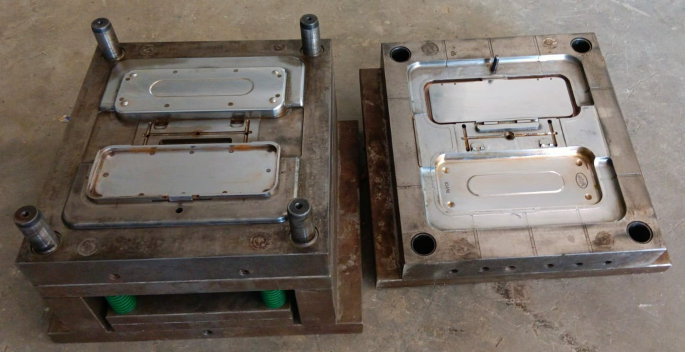Medical Molding Parts: Precision and Quality for the Healthcare Industry
The healthcare industry relies on precision and quality when it comes to medical equipment and devices. From surgical instruments to diagnostic equipment, every component plays a crucial role in ensuring the safety and effectiveness of patient care. One integral aspect of this process is medical molding parts.
Medical molding parts are crucial components used in the manufacturing of medical devices. They are often made from different materials such as plastics, metals, ceramics, and silicone. These parts are designed to meet specific requirements and standards to ensure their compatibility with medical devices.
Precision is a key factor in medical molding parts. It is important to achieve the desired accuracy and dimensions to ensure the proper functioning and fit of the part within the device. This level of precision is achieved through advanced manufacturing techniques such as injection molding, blow molding, and extrusion.
Injection molding is the most commonly used technique for producing medical molding parts. It involves injecting molten material into a mold cavity, allowing it to cool and solidify into the desired shape. This process offers high production efficiency and accuracy, making it ideal for mass production of medical parts.
Blow molding, on the other hand, is suitable for creating hollow parts such as bottles, containers, and tubes. It involves blowing air into the molten material to form the desired shape. This technique is commonly used in the production of medical tubing and containers.
Extrusion is another technique used in medical molding. It involves forcing molten material through a die to create a continuous profile. This technique is commonly used in the production of medical tubing and catheters.

Quality is of utmost importance in the healthcare industry, and medical molding parts are no exception. These parts undergo rigorous quality control measures to ensure their reliability and performance. This includes material testing, dimensional inspection, and functional testing.
Material testing is conducted to ensure that the chosen material meets the required standards and specifications. This involves testing for properties such as strength, flexibility, and biocompatibility. Biocompatibility is particularly crucial to ensure that the material does not cause any adverse reactions when in contact with the human body.
Dimensional inspection is carried out to ensure that the medical molding parts meet the specified dimensions and tolerances. This involves the use of advanced measuring tools and equipment to verify the accuracy and precision of the parts.
Functional testing is performed to ensure that the medical molding parts perform their intended functions effectively. This may include testing the parts under various conditions, such as temperature and pressure, to simulate real-life scenarios.
In addition to precision and quality, medical molding parts also need to meet strict regulatory requirements. These requirements vary by region and are put in place to ensure the safety and efficacy of medical devices. Compliance with these regulations is essential to ensure that the medical devices can be legally sold and used in the healthcare industry.

The healthcare industry continues to evolve, and so does the demand for medical molding parts. Advancements in technology and materials have enabled the production of more complex and sophisticated medical devices. This, in turn, drives the need for high-precision and high-quality medical molding parts.
In conclusion, medical molding parts play a vital role in the healthcare industry. They are essential components used in the manufacturing of medical devices and equipment. Precision, quality, and compliance with regulatory requirements are crucial factors in the production of these parts. As the healthcare industry continues to advance, the demand for medical molding parts will only increase, ensuring the delivery of safe and effective patient care.
Նախորդը:Creating Durable and Stylish Plastic Injection Chair Molds
Հաջորդը: Revolutionizing Healthcare: Exploring the World of Medical Molding Parts
-
Manufacturing High-Quality Plastic Injection Chair Moulds
2023-9-30
Introduction: Plastic injection chair moulds play a crucial role in the manufacturing process of chairs. These moulds ar...
Մանրամասնորեն -
Plastic box mold injection molding, excellent quality creates the future
2024-4-19
In today's wave of industrial production, plastic box mold injection molding, with its excellent quality and innovative ...
Մանրամասնորեն -
Manufacturing Medical Molding Parts: Ensuring Precision and Quality
2023-10-5
In the medical field, precision and quality are paramount when it comes to manufacturing medical molding parts. These pa...
Մանրամասնորեն -
Injection Crate Mould manufacture: Crafting Durable Solutions for Efficient Storage
2023-7-29
Injection crate moulds are essential tools in the manufacturing industry for crafting durable solutions for efficient st...
Մանրամասնորեն -
Design and Manufacturing of Plastic Injection Chair Mould: Ensuring Quality and Efficiency
2023-10-8
Introduction There is an increasing demand for high-quality and efficient furniture production. Plastic injection chair ...
Մանրամասնորեն -
Plastic injection box mold: a new choice for efficient manufacturing
2024-3-29
Speaking of efficient manufacturing, how can we not mention plastic injection box molds? This thing is simply a "little ...
Մանրամասնորեն







